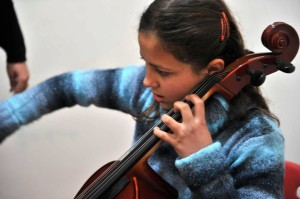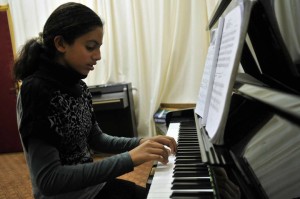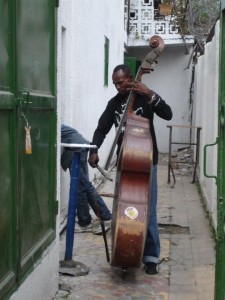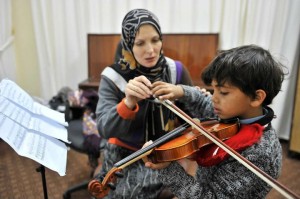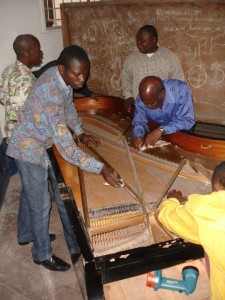Meet John Dutra. He has been drumming for fifteen years and making custom drums for the last ten. He’s the owner and creator of the world renowned Guerrilla Drum Making DVD, which helps the average Joe build his own professional custom drum set with no tools and no experience. He’s also heavily involved with live gigging, studio gigs, and teaching drums. Lastly, he is the newest addition to our rooster of competent guest-bloggers, and this is his first contribution. Enjoy:
The minimalists guide to knowing your drum shells and designing the perfect sound.
Let’s jump right in and start talking about the most important factor in the sound design of drums: drum shells!
Any drummer who’s played a variety of drum types knows that the shells are the meat and potatoes… the heart and soul of the drum. It’s where the true sound of the drum comes from. Other factors like heads, snare wires, hoops, bearing edges and tuning styles affect the tone of drums as well. But remember… with good shells those factors help boost your sound and with bad shells, you’re dependent on those things for a good sound. I’ll take the former, thanks.
But this isn’t about what’s good and what’s bad – that’s just to subjective. In each variety of wood (it’s estimated there are over 100,000 species of trees), metal, synthetics, and construction of all three… there’s huge potential for some awesome drum tones with unique sounds perfect for what style of music your after.
If you want a minimalist guide to understanding drum shells with some easily digestible sound explanations, this is it. Hopefully this will get you started down the road to designing the perfect sounding drum set with the best products.
Let’s break this guide into three parts: Wood, Metal, and Imitation Drum Shells (A.K.A Synthetics).
PART 1: WOOD
Wood Drum Shell Construction – The Big 4 and 1 Other One
1. Plied Shells: good range of pitch (great for tuning) and long sustain. Built with plys and lots of glue!
2. Steam Bent: very strong and brilliant sound with long sustain and resonation. Built by steambending a plank of wood and glued at an overlapping joint. Low amounts of glue and lots of wood!
3. Solid Shells: tone is like steam bent shells but higher in pitch and more woody. Truly a solid construction (think of a hollowed out tree trunk made into a drum) with no glue.
4. Segment: not long sustain but high pitched and more “wood” sounding. Lots of glue used with grains running horizontally.
5. Stave: awesome construction with low amount of glue and wood grain that runs vertical. Shell tone has long sustain and a rich resonation.
Popular Wood Drum Shell Types
– Maple: very even sounding wood. good high tones and low tones and all around a great all purpose shell.
– Birch: hard wood with higher pitch than maple and cuts through nicely, but very similar to maple as well. Awesome shell for studio gigs in my opinion.
– Mahogany: a very soft wood…nice rich low end that resonates beautifully
– Bubinga: also a very rich low end with a punchy sound and beautiful looks. Makes awesome snare drums.
– Beech: if maple and birch had a child, his name would be beech.
– Poplar: very smooth and even tone with highs, mids and lows.
Please note: there are tons more wood type than the above mentioned. However, these are the most common.
Depth, diameter, and thickness all play a huge roll in sound design as well. Remember this rule of thumb when considering your shell thickness: the thinner the shell… the lower the tone. The thicker the shell, the higher the tone.
PART 2: METAL
Metal Drum Shell Construction- The Big 2
1. Cast: liquid metal pored into a mold. sounds like,… metal! high pitch.. long sustain and good tuning range.
2. Spun: formed by high speed spinning. Spun metal also has great resonation and sustain and a high pitch.
Popular Metal Drum Shell Types
– Brass: Nice open sound. Good range of high tones and low tones and sounds awesome at live gigs and in the studio.
– Steel: very high pitched sounding drum with decent lows.
– Aluminum: a very versatile sounding shell with a lot of tuning ranges. good highs, mids and a nice low thud!
– Titanium: Very metal sounding! Resonating high pitch and not the greatest low end tones.
Please note again: there are tons more alloys than the above mentioned. However, these are very common shells.
PART 3: Imitation or Synthetic Shells
Popular Synthetic Shell Types:
– Fiberglass: an even sounding, soft shell with nice tones. Projects well in live gigging situations and very clean sounding.
– Acrylic: Very powerful and aggressive sounding shell. Awesome for live shows and harder to control for studio gigs yet perfect for that big rock, aggressive sound
– Carbon Fiber: A Dry sound. the high end tone outdoes the low end and mid range qualities of the shell, but can be perfect for that cracking snare drum your after.
Why isn’t there much info on synthetic shells?!! Well.. to be honest, synthetics have only been in the shell marketplace for about 40 years. There’s still a lot to learn!
CONCLUSION:
All in all… there’s a ton of options to consider when designing your perfect drum set. Things like shell thickness, diameter and depth, bearing edges and other important factors are not included in this minimalist list to understanding drum shell properties. But I hope you’ve learned a little more about shell types and their sound qualities, so that you can pick a type that best suits your immediate needs.
Questions? Comments? Opinions?! Leave them below in the comment section.
Good luck and have fun!
-John Dutra
Visit John’s website here: www.guerrilladrummaking.com
Till then, here’s a introductional video:
Guerrilla Drum Making DVD: DIY Drum Building from GDM on Vimeo.

